I honestly never thought I’d be writing a post about using decodable texts as the main way to have learners apply their reading skills.
Why? Because I was trained in the ways of balanced literacy.
Decodable books and texts were something you were encouraged to use just sometimes. They were definitely not the main source of reading.
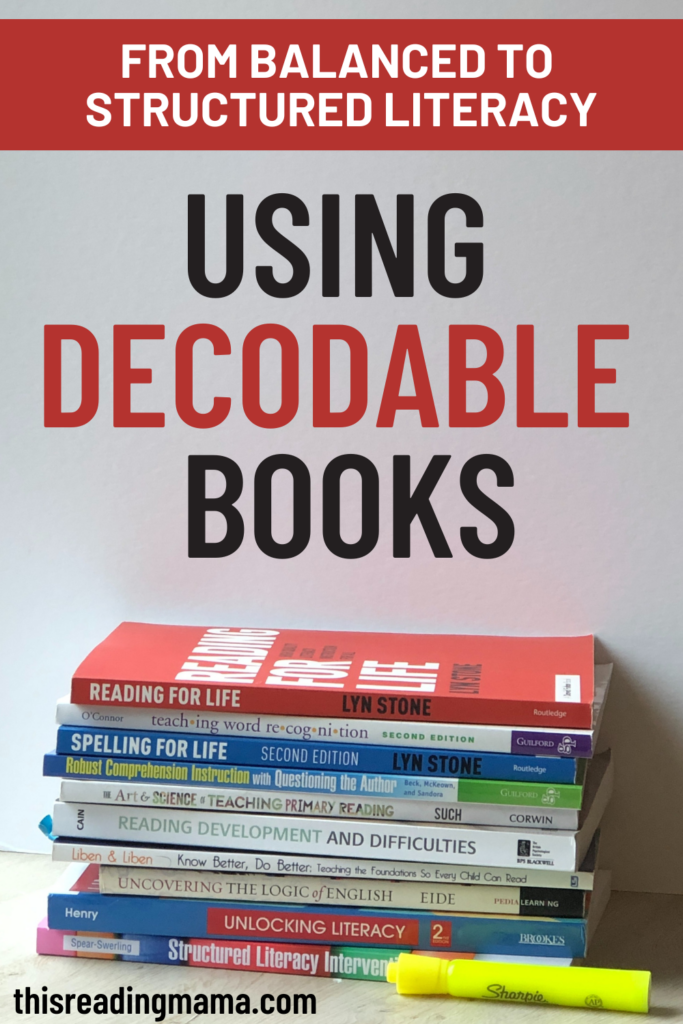
But as I learned about structured literacy and the decades of research behind it, I began to let go of balanced literacy and my leveled reading library {that was a hard one} and took a fresh look at the kinds of books I was asking kids to read.
*I am a participant in the Amazon Services LLC Associates Program, an affiliate advertising program designed to provide a means for me to earn fees by linking to Amazon.com and affiliated sites.
What are decodable texts?
Decodable texts are books or reading material in which the language is controlled to include mostly the phonics skills or sight words you’ve already introduced/taught to your learners.
For example, if you’re teaching the CVCe pattern to your readers, the decodable texts would include mostly:*
- Previously taught phonics words such as CVC words, short vowel words with blends or digraphs
- CVCe words
- Sight words with the CVCe pattern such as like, use, or ride
- Other sight words they already know
*Not every single word of a decodable reader has to be controlled. But you want the majority of the words to be words that allow your reader to apply the skills they know to real reading – no guessing needed.
Why should we use decodable texts?
As I shared in my post, What We Got Wrong with the Three-Cueing System, when we use books that have uncontrolled language in them, it encourages our learners to guess at words based on the context. Cues like, “What would make sense?” or “Look at the picture,” are how our learners guess at unknown words.
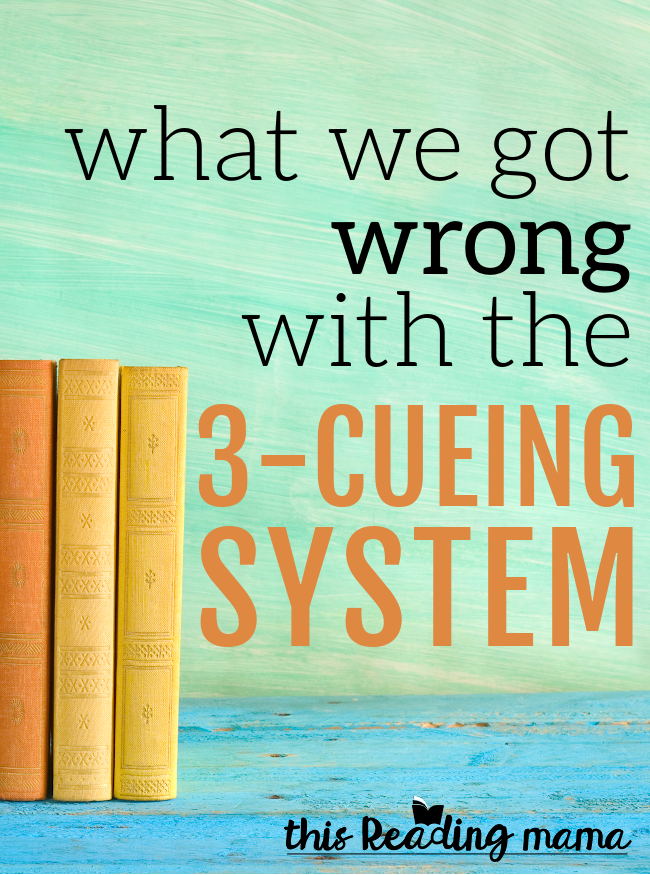
When books and texts have controlled language, learners are encouraged to LOOK AT THE ACTUAL WORDS to figure out the words. Guessing by heavily relying on context is not encouraged.
And when our readers are figuring out the words based on the letters and patterns in the words, they are doing the hard part of mapping the words. This gives them the tools they need to read that word correctly when they see it again in the same text or in another book.
What are some examples?
Listed below are a few examples of decodable resources for you:
- Short Vowel Word Family Readers – I’ve shared free printable readers and activities from my reading curriculum, Learn to Read.
- BOB Books {Don’t forget about our FREE BOB Books printables, which compliment the books.}
- All About Reading – I LOVE their readers and activities for teaching beginning readers.
- Phonic Books has some amazing decodable readers even for older readers!
- The Measured Mom has shared even more in her Ultimate Guide to Decodable Readers. She also has a few fiction and nonfiction sets she’s written in her shop!
- Create your own sentences, books, or paragraphs. Think about the phonics patterns your learners know and ones you are currently teaching. You can even have fun creating texts WITH your learners. You can get downright silly, too! How about, “Look at that goat in a boat, floating on the moat!”
How Long Should Kids Read Controlled Text?
It helps me to think of decodable texts like training wheels on a bike. I took the training wheels off my son’s bike at an earlier age than I did for my daughter. Why? Because my daughter wasn’t ready as early as he was.
How did I know? There were certain things I was looking for to indicate that she was/wasn’t ready.
It’s the same way with controlled texts. To my knowledge, there isn’t a magical formula that dictates when a child can move away from decodable texts. Personally, I believe there are signs that can indicate readiness.
Some of those signs {for me} would include:
- consistency with looking at the words to figure out unknown words instead of the pictures or context
- knowledge and mastery over blending sounds in words
- knowledge and mastery over basic word chunking – For example, recognizing simple suffixes in words like jumping or jumps
- consistency with reading CVC words, short vowel words with blends/digraphs, CVCe words, r-controlled words, and the majority of vowel team words
- a large high frequency word knowledge
If I was pigeon-holed into giving a definite response, I’d say that generally if learners are considered “on grade level” with their reading, then all of the Kindergarten level and about half-ish of the first grade level should be with decodable books. When a child gets to the level where they can read Frog and Toad books on their own, it’s about time to take those training wheels off.
What about Comprehension?
Wait just a minute here. What about comprehension? I thought the purpose of reading was comprehension. And you are correct.
But reading comprehension is really comprised of two things: decoding and listening comprehension. If you don’t have decoding, you don’t have reading comprehension. Likewise, if you don’t have listening comprehension, you don’t have reading comprehension.
While it’s true that some decodable readers really aren’t worth your time or your dime because the language is so stilted that it isn’t understandable, other decodable readers build both decoding and listening comprehension. For example, the readers in All About Reading encourage reading comprehension. So do many of the books in The Measured Mom’s list.
Another point to remember about comprehension is that we should be doing other kinds of reading throughout the day ~ namely reading aloud. Using quality literature as we read aloud is still the BEST PLACE to teach reading comprehension and model those comprehension strategies.
Want to delve more into this topic? I highly recommend Choosing and Using Decodable Texts by Wiley Blevins. It’s an easy-to-read and understand book and worth every penny. It even has some books in the back you print and use!
From Balanced Literacy to Structured Literacy Series…
Be sure to check out all the posts in our series by clicking on the images below.
Enjoy teaching!
~Becky
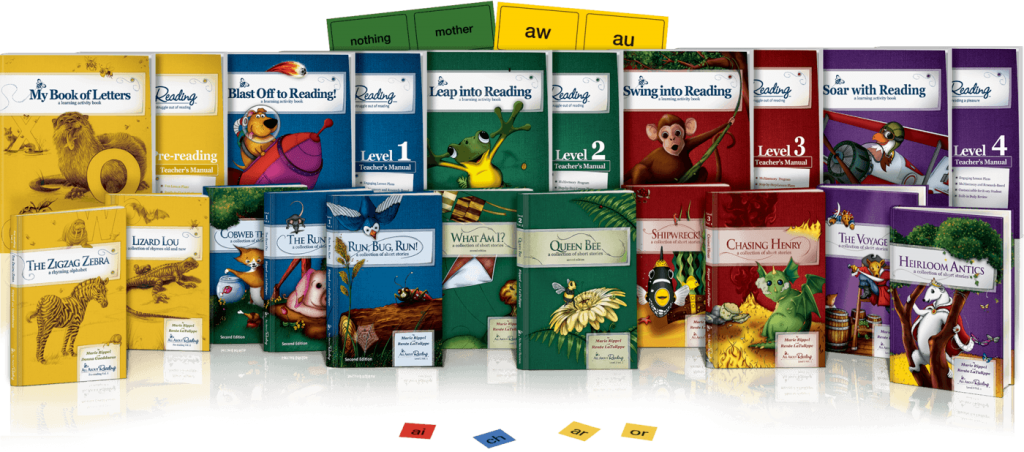
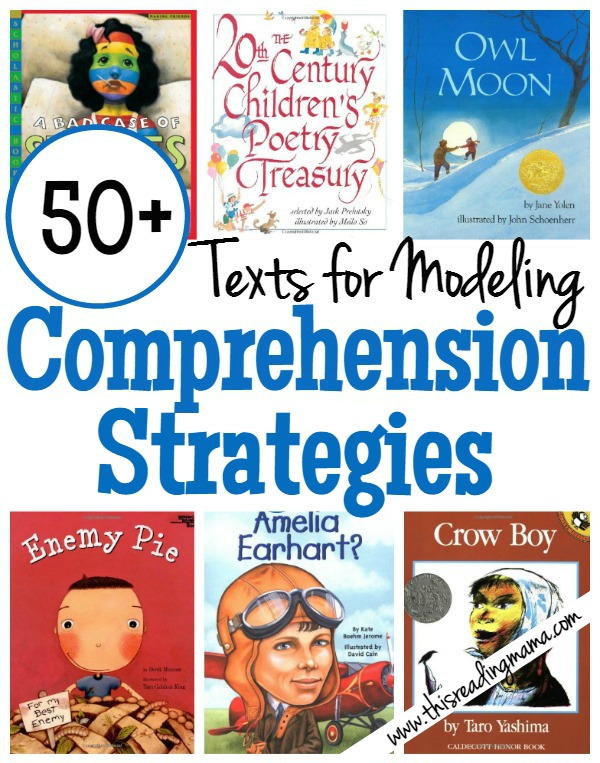

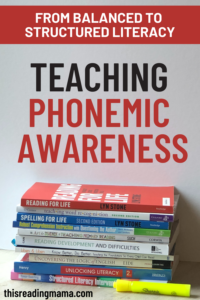
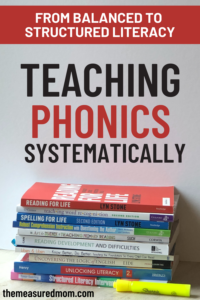
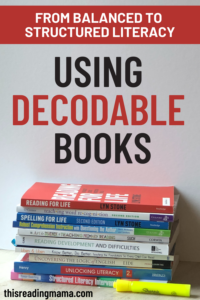
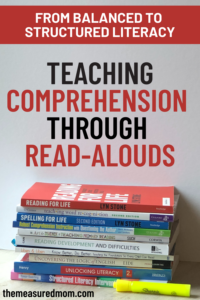
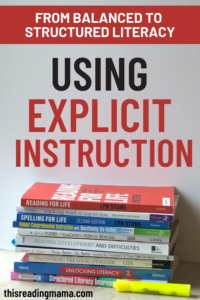
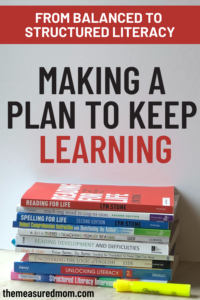
Thank you for the great information on decodables. When would you suggest starting to use decodables in kindergarten?
Thank you so much! Mara
Yes, I would. 🙂